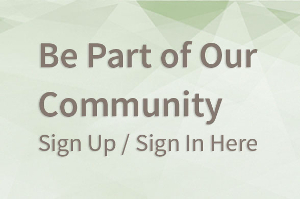BK Blog Post
Your Audience Isn't Who You Think It Is
 Posted by
Anna Leinberger,
Editorial Manager, Acqusitions,
Berrett-Koehler Publishers Inc.
Posted by
Anna Leinberger,
Editorial Manager, Acqusitions,
Berrett-Koehler Publishers Inc.
Anna is a writer and editor for Berrett-Koehler in Oakland, CA. More on killer book proposals and writing can be found on her BK Blog.
Many people would love to believe that thinking about “audience” is the domain of Madison Avenue and Mad Men, that people who write things as noble as books should not be concerned with such things. It is a common misconception that books contain ideas that are intrinsically and independently valuable, that any idea ensconced in folio should “stand on its own merit,” and that if you put a good enough idea into a 5 ½ X 8 ½ printed form some sort of magic will happen and poof! everyone on the world will want to buy your book.
Sorry/Not sorry to burst this lovely fantasy, but that is decidedly not the case.
I work in the editorial, not marketing, department of a non-fiction publishing house, and yet understanding messaging and audience is a crucial part of my job. A book that no one can be persuaded to read is not creating value. A book that no one has heard of cannot make change, not matter what the pages contain. I want the books we publish to be read, to excite readers, to galvanize them to action. I don’t want them to decay in a warehouse somewhere because no one gave a thought to who might read these books, and more importantly, why they should.
Audience through two different lenses
Your Audience is not the people that YOU think would benefit from your book. Your audience is the potential readers who think they would benefit from your book.
Most book proposals, including ours, ask the prospective author who the target audience is. As I have written before, asking this does two things: not only does it prove to us that an audience exists, how you answer the question tells us how well you understand the concept of a target audience. The common fallacy here is thinking that because you wrote a book you think would help a group, everyone in that group then counts as part of your audience. If you write a book that addresses an issue in management, too many people will simply stop at saying their audience is “managers.” This leads authors to estimate to absurd degrees and claim “there are XX MILLION managers in the US! That means I am guaranteed to sell XX hundred thousand if I get even a (tenth/one hundredth etc) to buy the book!” Couple problems here: one is that there are an enormous number of management books on the market- what makes yours so important that a manager would choose yours over another? You do have to be a bit hard on yourself here… the answer cannot be any iteration of “because my book is AWESOME, that is why.” The answer needs to demonstrate that you deeply understand what your audience would say they need, not what you think they need.
The Fallacy of Generalization
That brings me to the second point- large swaths of “audience” are going to have very different needs. Going back to the “manager” example, all managers do not have the same needs. That is simply too large a sample size- the XX million managers in the USA are so wildly diverse that no one book will speak to every single one of them. When trying to narrow your audience, you need to identify a common problem and figure out what subset of the larger group you are speaking to. What specific problem are you trying to solve. A bigger audience is not a better audience. An audience you know well is a better audience. A better audience would already, independent of knowing of your book, have expressed frustration that your book addresses.
Isn’t this the Publisher’s job?
Yes. Knowing your audience and marketing to it absolutely is a publisher’s job, and that is why we have an enormous marketing department. However, the two are not mutually exclusive. It is your job as an author as well. The bottom line is that you are writing the book, not us. Your book itself must demonstrate an understanding of the specific needs of a targeted group- remember, the needs THEY would express, not the needs YOU think they have- and the book must follow through on solving that problem. We can spin and pitch and frame fabulously, but if the content does not live up to the pitch, your book is sunk.





